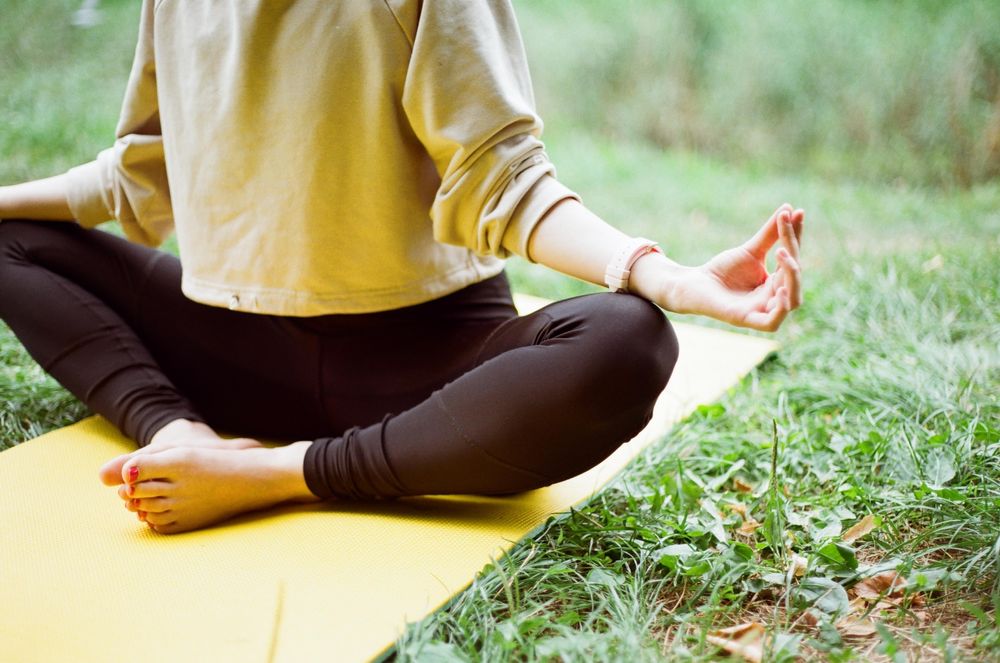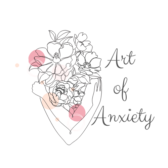One of the best techniques I learned during my time in Occupational Therapy was using sensory snacks. These small sensory regulation strategies helped me get my anxiety under control so that I could do what I needed.
Getting to know your body is one of the most essential steps on your journey to master your anxiety.
Sometimes life gets overwhelming, especially if you are a highly sensitive person. When I’m in large crowds or waiting in queues that seem endless, my anxiety spikes. And often, in these situations, it can be difficult to find a safe space. In these cases, your body needs to become your safe space.
What is Sensory Regulation?
Sensory regulation is decreasing your arousal levels to match the environment. It helps you to regulate your emotions.
Our brains are confronted with sensory stimuli at every moment. Its job is to process it accurately. But with anxiety, your brain can get a little confused. Sensory regulation shows your brain the reality of the situation, allowing it to accurately respond to what is happening.
If you’re someone that struggles with sensory overload, sensory regulation can allow you to cope better with triggering situations.
What is Sensory Overload?
Sensory overload happens when there is too much sensory information entering your brain, and it doesn’t know how to process it. One or more of your senses become overstimulated.
If you’ve ever wanted to close your ears in public because you’re so overwhelmed, you likely were experiencing a sensory overload. Being in this state can make you more irritable and feel on edge. In people with anxiety disorders, this can lead to a panic attack.

Learn about Your Senses
We’re all different and process the environment around us in a unique way. Some of us are more sensitive than others. You might have noticed some people have a keen sense of smell, while others can hear things that you miss. This doesn’t mean they have superpowers. They’re just more sensory sensitive.
During my time in Occupational Therapy, I did a sensory matrix. This helped me to understand my sensory processing style. With the information, I began to understand what made me go into sensory overload (and how to regulate).
For a quick introduction to your sensory style, you can take a sensory quiz.
Sensory Self-Regulation
One of the best skills you can learn in life is self-regulation. You’re not always going to be in a safe space. There will be crowded places, terrible smells and loud music. Your body will react to its environment and send messages to the brain. If you’re living, there will be places where you feel overwhelmed.
To be able to live the life you want, self-regulation is key.
Find What Calms You
Everyone is different. What calms one person may completely freak another out. For example, when I get driving anxiety, I blast screamo music in my car. This isn’t something that anyone else in my life understands, but it makes me feel scarier than my anxiety.
When I did my sensory matrix assessment, music was one of my high tolerance senses. Because of this, it is a great tool to use when I’m freaking out. It evens out my sensory overload. Now I carry earphones around with me, just in case I get a bit too overwhelmed.
You just need to figure out what tones down your anxiety.
Sensory Snacks
Occupation Therapy taught me many things, but one of the tools that stuck with me was ‘Sensory Snacks’, a cute name for a few sensory regulation strategies. There are essentially little things that can help you to regulate yourself down.
If you think about your senses as a boiling pot, the sensory snacks are like opening the lid. By doing this, you give the pot some air, so the water doesn’t boil over the side. It doesn’t turn off the heat, but it gives you some space to breathe.
Sensory Snack 1: Sipping/ Sucking/ Chewing
Using your mouth is a great way to regulate yourself. You can drink water from a spouted bottle, chew gum, suck on sweets or chew something crunchy. All of these things are discreet and can help you to regulate yourself. I used to always have something crunchy with me when I knew I was going into a particularly stressful situation.

Sensory Snack 2: Breathing
Activating your parasympathetic nervous system is a quick way to calm down. And you can do it anywhere. The best way to do this is by placing your top lip over your bottom lip and then breathing out. By doing this, you create an airflow that travels down your chin, giving you a tactile response. Repeating this five times can help you to feel less overwhelmed.

Sensory Snack 3: Move
Movement is one of the most common sensory regulation strategies that people use to calm themselves down. Whether it’s going for a walk, stretching at your desk, walking up the stairs, or practicing some yoga, it can help keep your senses from getting too overstimulated.
You can easily excuse yourself to go to the bathroom. The walk will help you regulate down, and you’ll be able to physically step away from the situation that’s overstimulating you.

Sensory Snack 4: Fiddle
Keeping your hands busy can help nervous energy leave the body. This is where the fidget spinner, fidget cube craze comes in useful. But a stress ball, some play dough, a paper clip, or an elastic band also work.
You can keep your fidget toy with you in your pocket. It’s something small you can do in a meeting, while waiting in a queue or while in the bathroom. Using your hands can help you to focus your mind and calm yourself down.
I have a tub of therapy dough that I keep at my desk to help me focus during long meetings.

Sensory Snack 5: Joint Compression
Creating sensory feedback by compressing your joints is another technique you can use to calm your body down. These subtle movements can help down-regulate your senses.
And joint compression is easily accessible. You can do press-ups on your chair or against a wall or place pressure on your head with your hands. You can also sit on your hands and push yourself up, do some jumping jacks, or press your palms against each other.
When my anxiety was at its worst, I used to do ten push-ups against my bathroom wall, ten jumping jacks and stand up and down on my tiptoes ten times before heading out. It got my heart rate up and distracted me from the anxiety.
Sensory Activities for Adults with Anxiety
If you’re feeling overwhelmed, there are loads of quick little self regulation techniques you can use to calm yourself down. What sensory regulation strategies do you use to regulate when you’re going into sensory overload? Let us know in the comments.

Kathryn is the creator of Art of Anxiety. She was diagnosed with GAD and MDD at 16 and has been working every day to master the art of anxiety ever since. Her favorite things to do are aerial yoga and hanging out with her cats while reading a good book.




